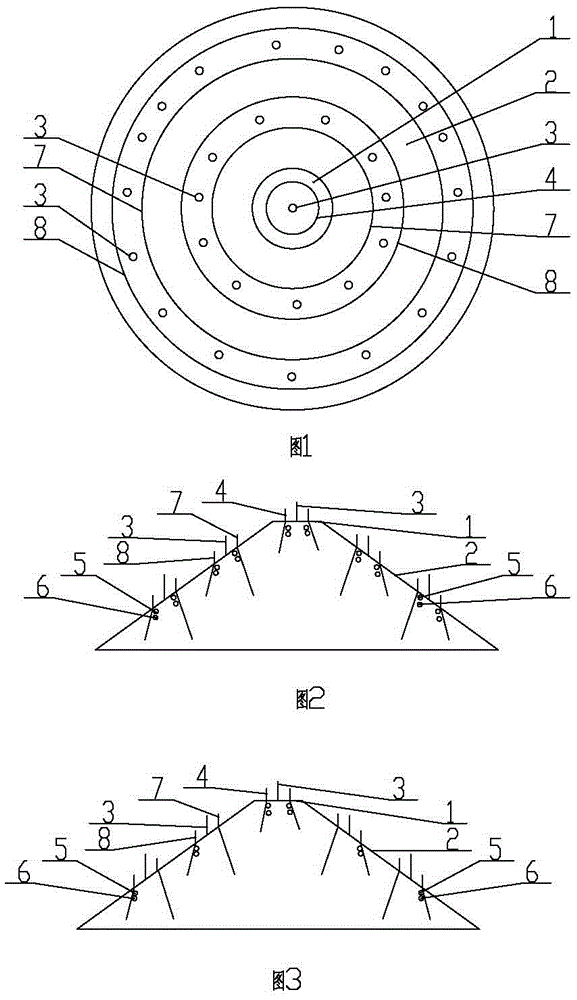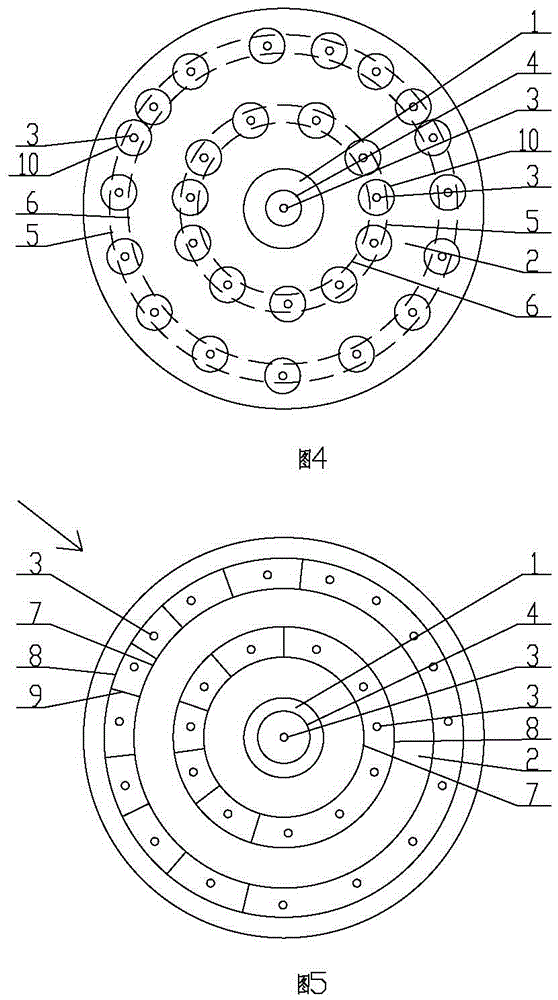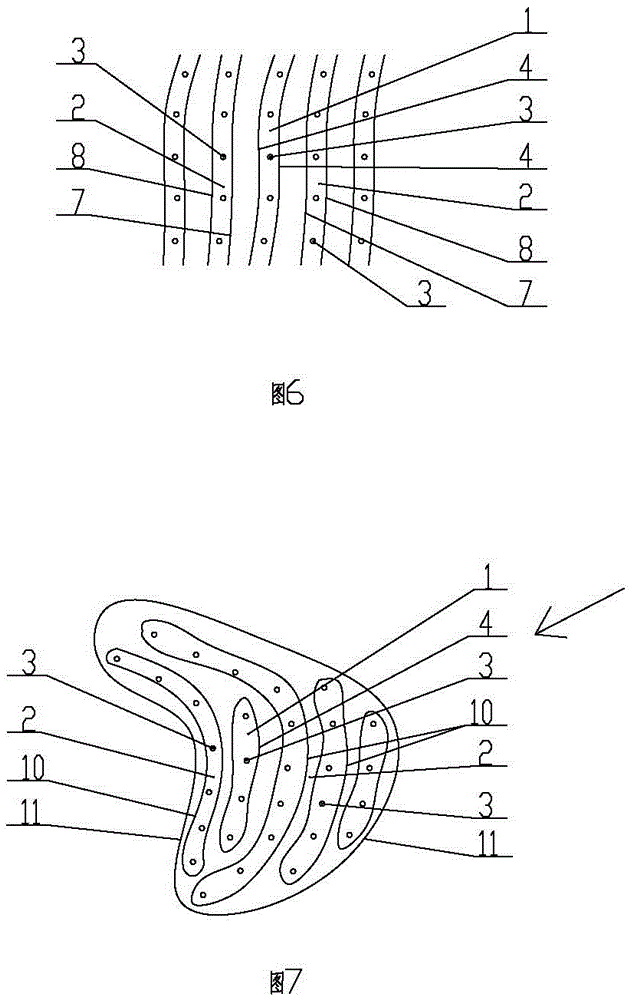Structure and application method for improving snowmelt water infiltration rate in non-irrigated Haloxylon planting area
A planting area and infiltration rate technology, applied in the directions of botanical equipment and methods, applications, watering devices, etc., can solve problems such as low moisture content of the underground soil layer, and achieve the effect of ensuring the effect, good application prospect and improving the survival rate. Effect
- Summary
- Abstract
- Description
- Claims
- Application Information
AI Technical Summary
Problems solved by technology
Method used
Image
Examples
Embodiment 1
[0031] Embodiment 1: As shown in Figures 1 to 7, the structure for improving the snowmelt water infiltration rate in the non-irrigated Haloxylon planting area includes sand dunes with slopes, and the sand dunes with slopes include slope bottom 11, slope top 1 and slope middle 2 , there is a first planting area at the top of the slope 1, and Haloxylon 3 is planted in the first planting area, and no less than two rows of Haloxylon 3 are planted in the middle of the slope 2 from top to bottom along the slope direction at intervals. A first straw wall 4 is implanted on the slope top 1 outside the planting area, and a mid-slope straw wall 10 is implanted on the mid-slope 2 of at least one side of each row of Haloxylon 3, and below the ground of the first straw wall 4 A self-temperature-controlling heating device 5 is buried, and a self-temperature-controlling heating device 5 is buried below the ground of the straw wall 10 in the slope. The setting of the first straw wall 4 and the...
Embodiment 2
[0039] Embodiment 2: As shown in Figures 1 to 7, the method of using the structure for improving the snowmelt water infiltration rate in the non-irrigated Haloxylon planting area is carried out according to the following method: the first straw wall 4 and the straw wall in the slope 10 are respectively implanted in the slope top 1 and the slope middle 2, and the self-temperature-controlling heating device 5 is buried below the ground of the slope top 1 and the slope middle 2, and then, the snowfall in the winter of the current year and the next winter falls to the slope top 1 and the middle of the slope 2, the falling snow on the top of the slope 1 and the middle of the slope 2 is surrounded by the corresponding first straw wall 4 and the straw wall of the middle slope 2 respectively to form snow accumulation. When the temperature is higher than 0°C, turn on and off the self-temperature-controlling heating device 5 alternately every day, and stop using the self-temperature-cont...
Embodiment 3
[0040] Embodiment 3: As shown in Figures 1 to 7, the difference from Embodiment 2 is that the drip irrigation belt 6 was buried below the ground of the slope top 1 and the middle of the slope 2, and after entering the summer of the next year, when the slope top When the snowmelt and rainwater in 1 and slope 2 cannot meet the growth demand of Haloxylon 3, use the drip irrigation belt 6 to supply water to slope top 1 and slope 2; or / and, when the wind speed in winter is greater than 4 meters per Seconds, a straw reinforced wall 9 is set between two adjacent Haloxylon 3; or / and, in October of that year, the first straw wall 4 and the mid-slope straw wall 10 are implanted into the top 1 and the mid-slope 2 respectively, and the The self-temperature-controlling heating device 5 is embedded below the ground of the slope top 1 and the slope middle 2 . When entering summer from June to August, the water supplied by the drip irrigation belt can increase the survival rate of Haloxylon 3...
PUM
 Login to View More
Login to View More Abstract
Description
Claims
Application Information
 Login to View More
Login to View More - R&D
- Intellectual Property
- Life Sciences
- Materials
- Tech Scout
- Unparalleled Data Quality
- Higher Quality Content
- 60% Fewer Hallucinations
Browse by: Latest US Patents, China's latest patents, Technical Efficacy Thesaurus, Application Domain, Technology Topic, Popular Technical Reports.
© 2025 PatSnap. All rights reserved.Legal|Privacy policy|Modern Slavery Act Transparency Statement|Sitemap|About US| Contact US: help@patsnap.com



